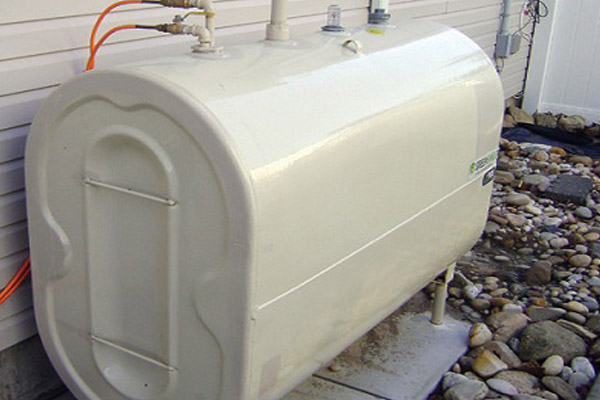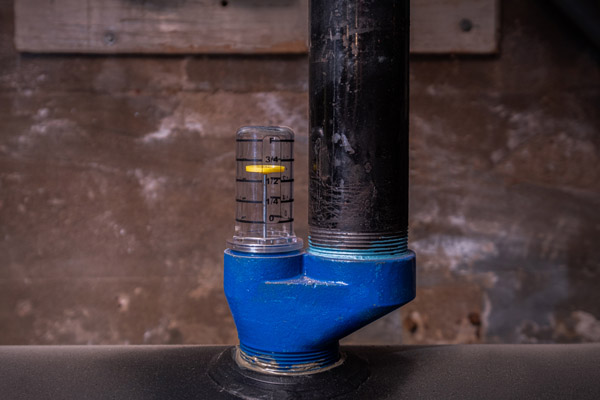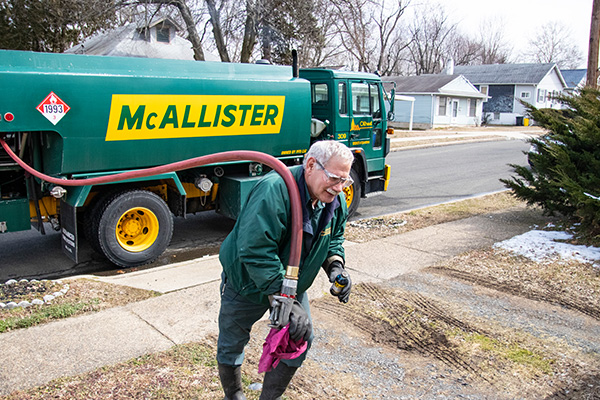What Is A Double-Wall Heating Oil Tank?

Homes in the eastern US use heating oil as a common fuel source. It is stored in a tank installed within the property and pumped to the boiler or furnace for heat generation. Consider getting a double-wall heating oil tank when you are due for an oil tank replacement. This article discusses the double-wall heating oil tank, its pros, and why it’s gaining popularity among oil-heat homeowners.
What Is A Double-Wall Heating Oil Tank?
Contents

A double-wall heating oil tank stores fuel and is comprised of an inner tank enclosed by a secondary outer tank. The space between these two tanks is known as the interstitial space. This area acts as a barrier to prevent spills and leaks from the inner tank from escaping into the environment. The interstitial space is sealed and has leak monitoring features, such as sensors and alarms that will alert the homeowner of any issues. If a leak occurs, the interstitial space will hold it and keep it from spilling into the environment.
Double-wall tanks also have a “spill bucket” or a small container sitting inside the interstitial space. It is responsible for catching any spills or leaks from the inner tank. This way, you have an extra layer of protection from leakages.
How Do Double-Wall Heating Oil Tanks Work?
The inner tank is where fuel is stored, while the outer tank is a secondary containment barrier. If oil leaks or spills from the inner tank, it is contained in the interstitial space between the two tanks. This keeps the fuel from escaping to the environment and wreaking havoc on your property.
Related Article: The Importance Of Regular Heating Oil Filter Replacements
Benefits Of A Double-Wall Heating Oil Tank

Double-wall heating oil tanks come with multiple benefits compared to their single-wall counterparts. The most crucial advantage is the additional protection from leaks and spills. The double-wall tank’s secondary containment barrier acts as an extra layer of security that a single-wall tank doesn’t have.
Another advantage a double-wall heating oil tank offers is its increased durability and longevity. Its outer tank can be made from high-density polyethylene or HDPE. This material is durable and ultraviolet-resistant, allowing it to withstand extreme weather conditions. Therefore, double-wall tanks are an excellent choice if you are looking for an outdoor installation.
Related Article: How Does Oil Heating System Work?
Double-Wall Heating Oil Tank FAQs

Here are some of the double-wall heating oil tank frequently asked questions:
Are Double-Wall Heating Oil Tanks Costlier Than Single-Wall Tanks?
Double-wall heating oil tanks usually cost more than single-wall tanks. However, the added cost is a worthy investment thanks to the increased durability and added protection from leaks and spills that double-wall heating oil tanks have. Several reasons make double-wall heating oil tanks typically more expensive than their single-wall counterparts.
The first reason is the materials used to make double-wall tanks are costlier. The inner tank is created using the same materials used in single-wall tanks, while the outer tank is made of high-density polyethylene. HDPE is a material that’s more expensive than normal plastic or steel used to make single-wall tanks.
The second reason is that it is more complex to manufacture double-wall tanks. The inner and outer tanks are manufactured separately and linked together afterward. This can add to their overall cost. Moreover, the interstitial space between these two tanks requires sealing and leak testing, adding to their production cost.
Thirdly, the installation process of double-wall tanks is more complex than that of single-wall tanks. The tanks need proper leveling, and the interstitial space requires leak monitoring. All these add to the overall installation cost.
The last reason is that double-wall tanks are considered long-term investments, making them costlier upfront. Their durability and longevity mean you can save money in the long run by avoiding expensive repairs and replacements.
Can I Install A Double-Wall Heating Oil Tank Indoors?
Yes, it is possible to install a double-wall heating oil tank indoors. However, you have to ensure that it is placed in a well-ventilated area to prevent fume accumulation.
You must follow the manufacturer’s instructions regarding installing double-wall heating oil tanks indoors. Follow local building codes and regulations as well. Proper ventilation, like using a pipe to ventilate the fumes outside, is required so that dangerous fumes do not accumulate inside your home.
Indoor installation may also need extra safety measures. For instance, you may have to install a spill containment tray to catch any potential leaks or spills. It is always advisable that you talk to an HVAC professional regarding heating oil tank installation. They have extensive experience, so they can provide the best advice and ensure a safe installation that complies with the regulations.
Related Article: What Do Heating Oil Additives Do?
Does the Law Require Double-Wall Heating Oil Tanks?

Each state and local jurisdiction has its own regulations regarding double-wall heating oil tanks. Installing a double-wall heating oil tank isn’t required by law in all regions. However, many states have regulations that make it necessary to have a secondary containment for fuel storage tanks.
Some areas may have regulations requiring new tanks to be double-walled. On the other hand, some areas may only require it for tanks in need of replacements. Moreover, some regulations may require homes with existing single-wall tanks to be installed with secondary containment, like adding a secondary containment tray or installing a double-wall tank.
Check with your local government or a professional who knows the regulations in the region where the tank is to be installed. This way, you can ensure that your tank follows the law and you have a safe and secure fuel storage system.
Related Article: Can I Put Diesel Fuel in My Home Heating Oil Tank?
Conclusion
A double-wall heating oil tank provides extra protection from spills and leaks. Its advantages include improved durability and secondary containment, making it an excellent choice for homeowners needing an oil tank replacement. They may be typically costlier than single-wall tanks, but the additional protection, increased durability, and peace of mind make it a worthy investment down the line.
Related Article: How to Read Your Home Heating Oil Tank Gauge
Call McAllister Energy For All Your Home Heating Needs

For all your HVAC and oil delivery needs, contact McAllister Energy. We have some of the most highly qualified and professionally certified technicians in Camden County, New Jersey. Each of our friendly techs can conduct all kinds of HVAC services, such as oil tank upgrades, boiler repair, ductless installations, furnace replacements, and more. We have various oil delivery plans and financing options. This way, you can customize your fuel deliveries to meet your needs. Our heating oil delivery and HVAC services are affordable and are done accurately and promptly at all times.
All of our services come with a guarantee. Our HVAC maintenance services improve your energy efficiency and home comfort while decreasing your HVAC costs. We can also assist you when you need to replace your heating and cooling system. We will help you find the best make and model for your home without sacrificing your budget. Our experts have the skills, training, and experience to ensure that all your home comfort needs are met. Book an appointment with us today. Call McAllister Energy for a free, in-home estimate.
You can click here to contact us now or call us at (856) 665-4545 to find out more! Click the link to view our service area.